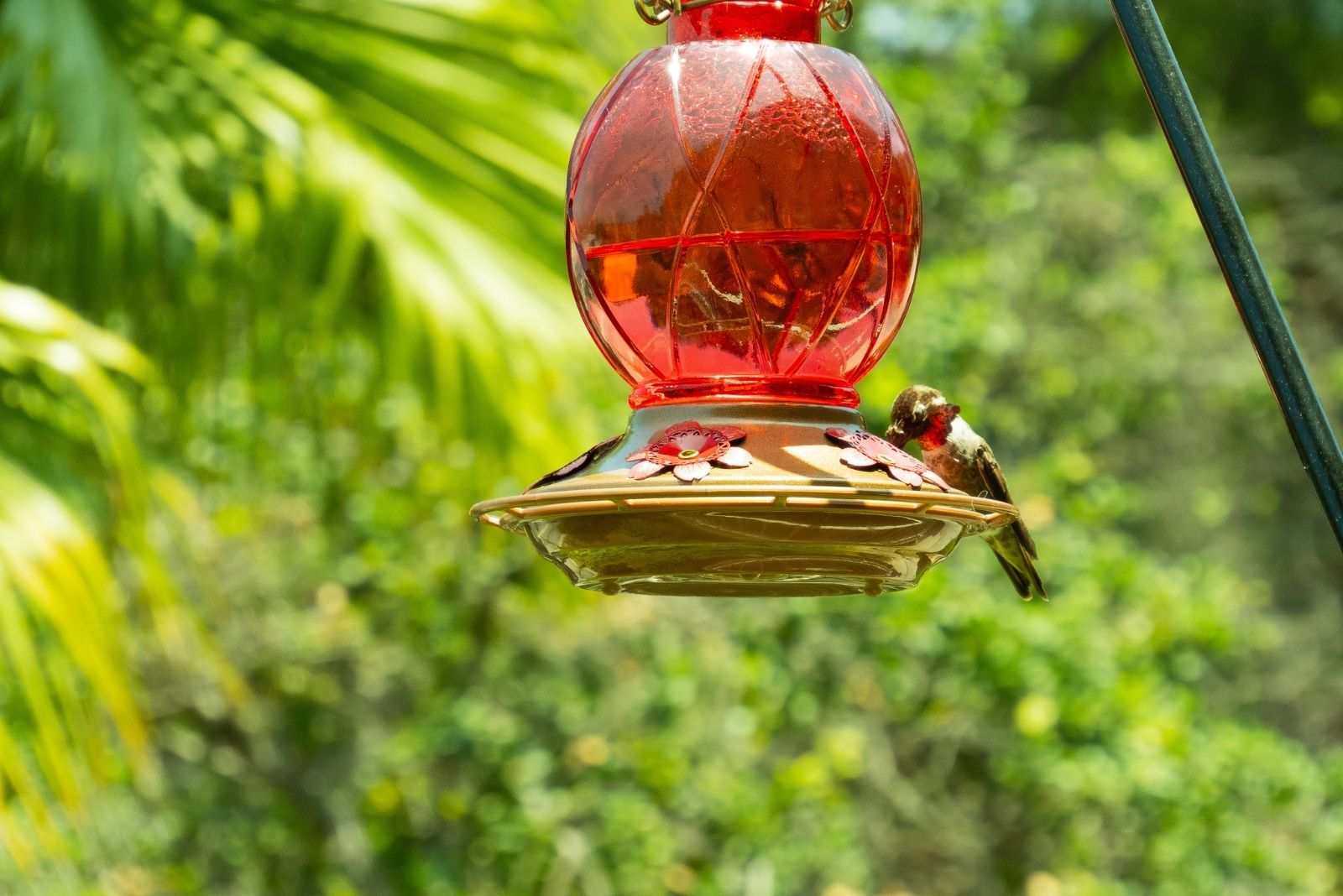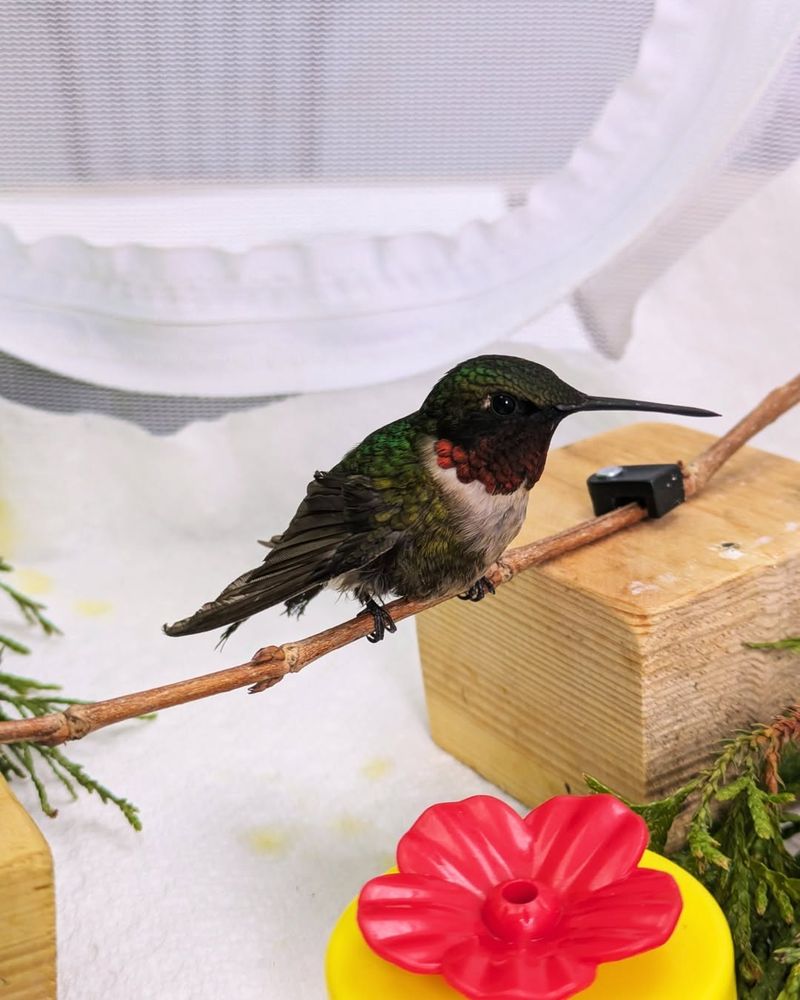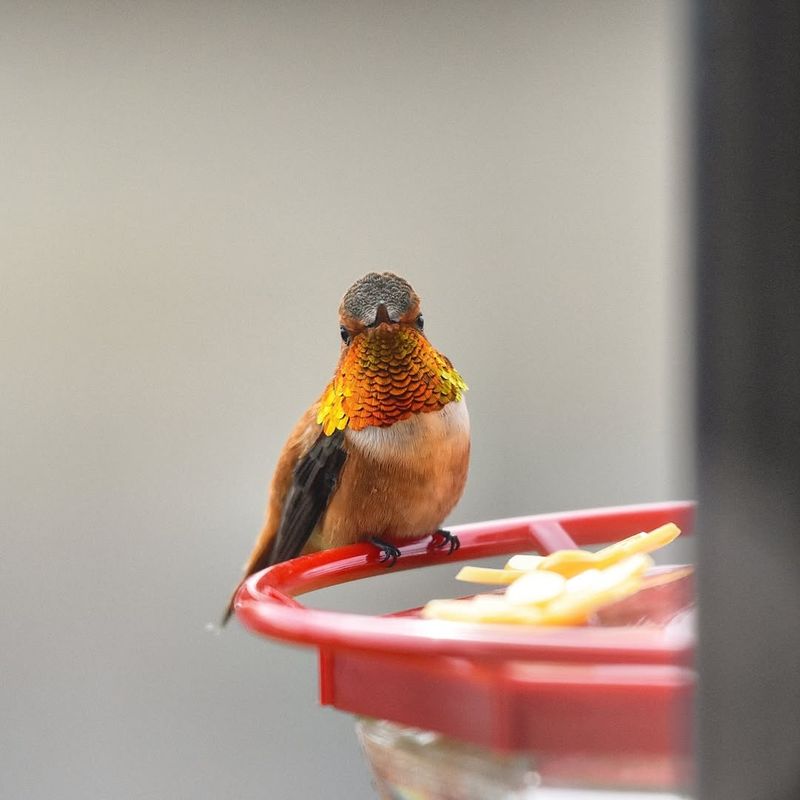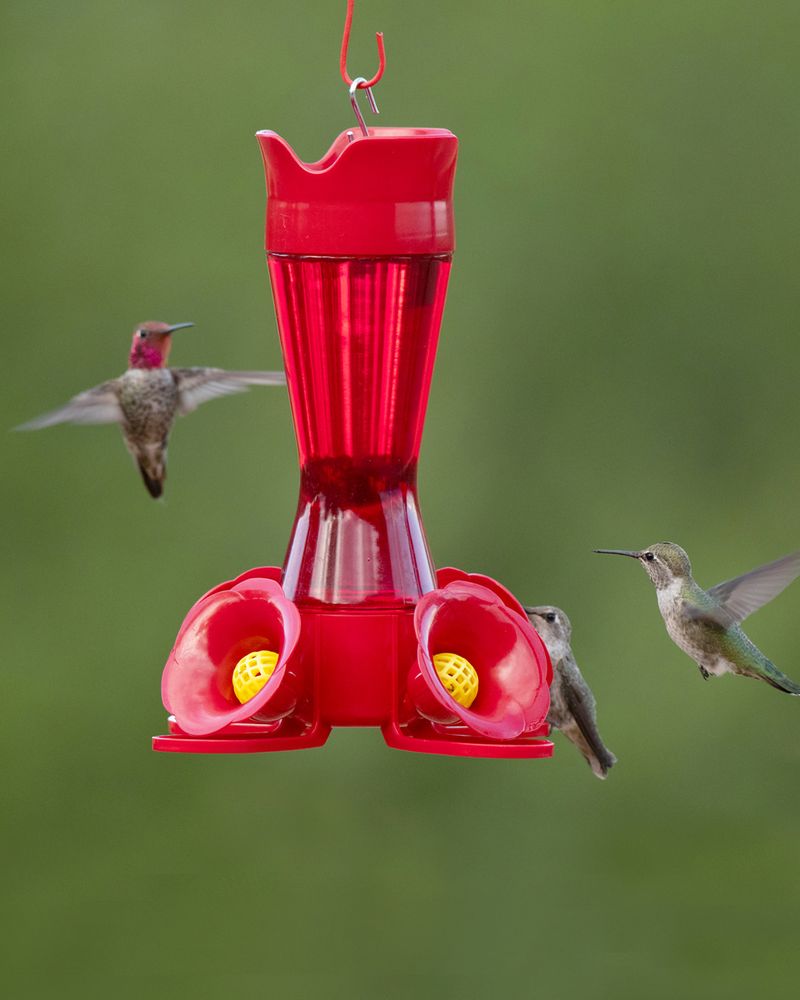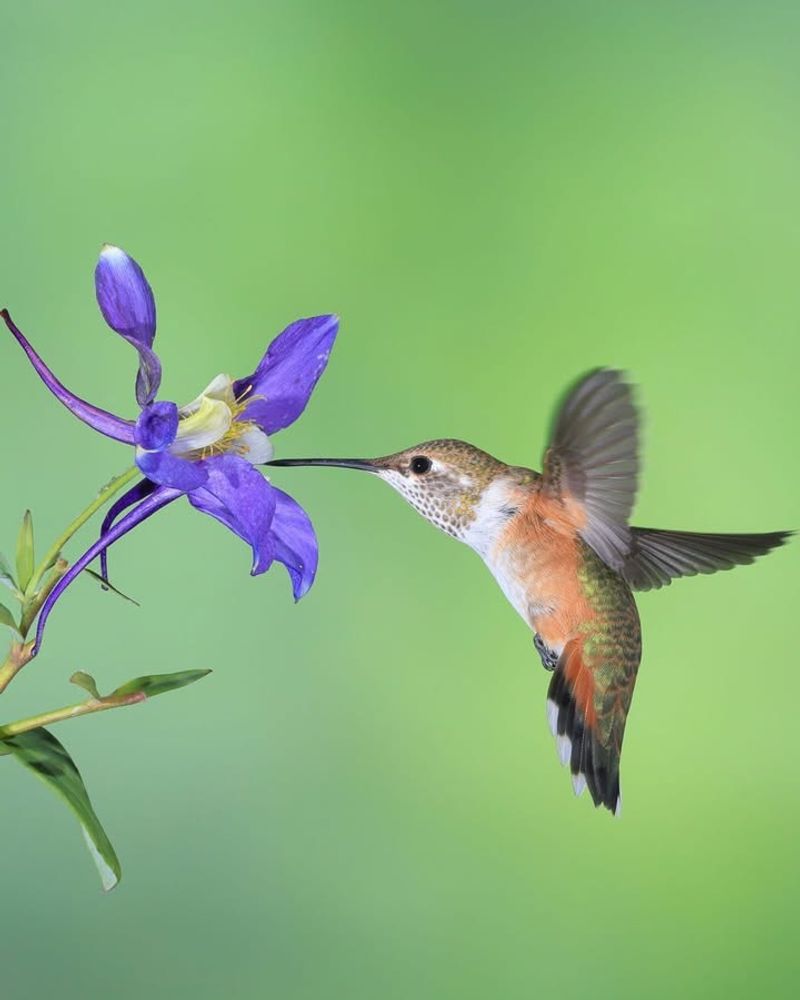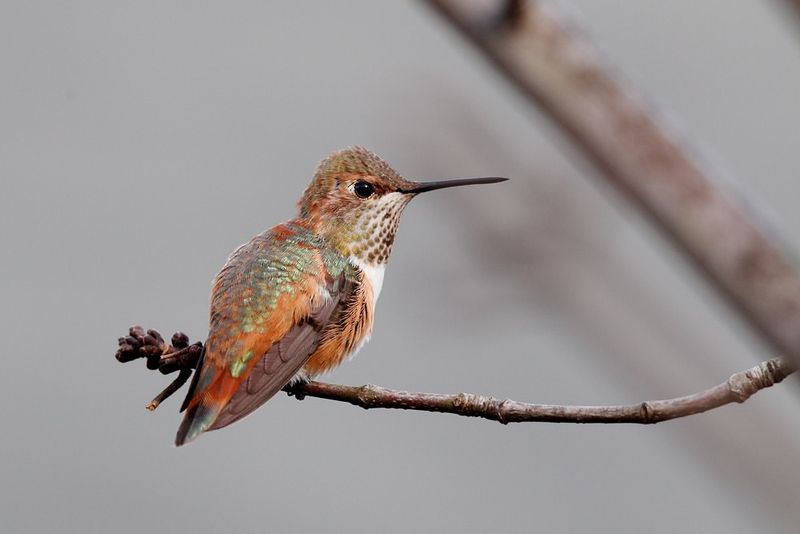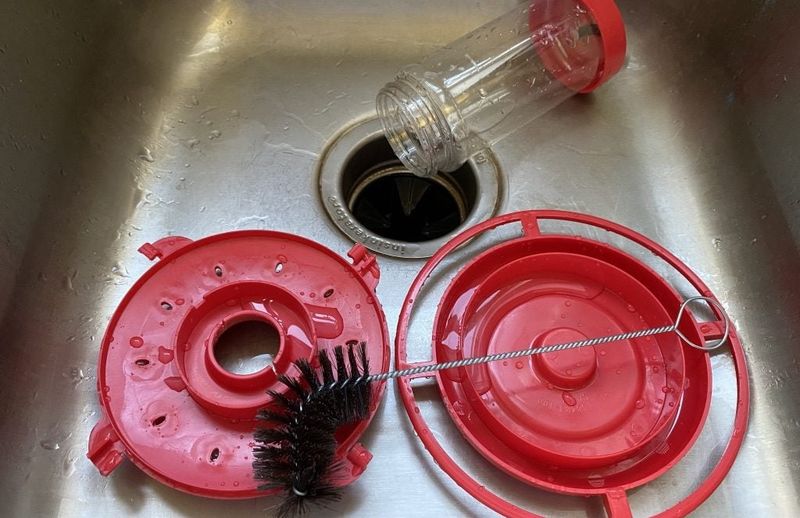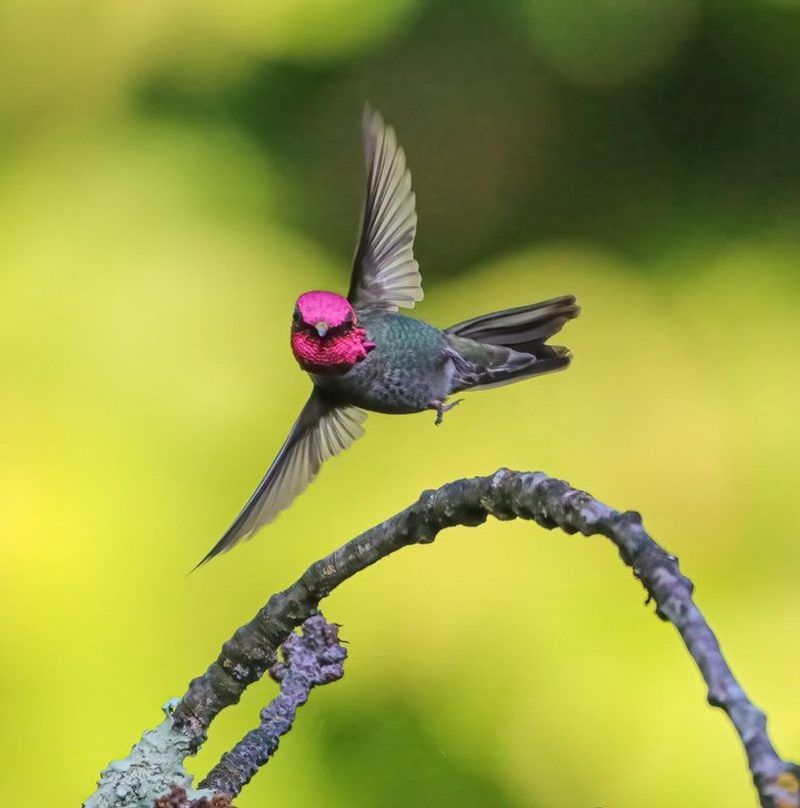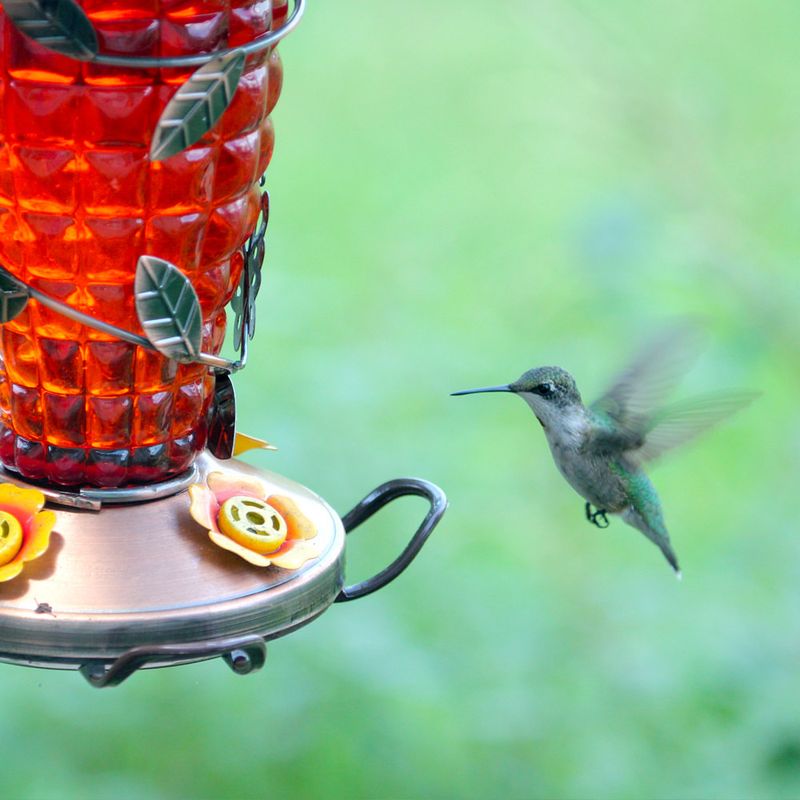As autumn settles across Ohio, hummingbird enthusiasts face an important decision: when should feeders come down? Timing matters because leaving feeders up too long can interfere with natural migration patterns, while removing them too early might leave stragglers without food.
Knowing the right signs helps you support these incredible birds while respecting their journey south. This guide walks you through eight clear indicators that it’s time to pack away your feeders for the season.
1. Noticeably Fewer Hummingbirds Visiting Daily
When your once-busy feeder suddenly feels like a ghost town, migration is likely underway. Most ruby-throated hummingbirds begin their journey from Ohio between mid-September and early October, so dwindling visits are a natural signal.
In my experience in Ohio gardens, I notice this sign often in late September when only one or two birds appear instead of the usual crowd. Pay attention to visit frequency over several days rather than just one quiet afternoon.
If you haven’t seen any hummingbirds for at least two weeks straight, it’s probably safe to take down your feeder and clean it for storage.
2. Cooler Temperatures Signaling Migration
Temperature drops trigger hummingbirds’ internal clocks to begin their southward migration. When overnight lows consistently dip into the 40s and daytime highs stay in the 60s, birds instinctively prepare to leave Ohio.
I’ve watched this pattern repeat each year in my own yard—cooler nights mean fewer morning visits. Weather changes don’t cause migration, but they coincide with it, making temperature a reliable indicator.
Check your local forecast and watch for sustained cool spells. Once temperatures remain consistently cool for a week or more without hummingbird activity, removal makes sense.
3. Nectar Levels Consistently Untouched
Full feeders that stay full tell an obvious story: nobody’s home. When nectar sits untouched for days despite regular refills, your hummingbirds have likely moved on.
I always mark my feeder refill dates on a calendar, which helps me track consumption patterns. During peak season, I refill every few days, but by October, the nectar barely budges.
Leaving unused nectar out invites mold growth and wastes sugar. If three or four days pass without noticeable consumption, consider this a strong sign that feeder season has ended in your area.
4. Presence Of Alternative Food Sources Nearby
Late-blooming flowers like salvias, asters, and cardinal flowers provide natural nectar that hummingbirds often prefer over feeders. When these plants flourish in your Ohio garden, birds may ignore artificial sources entirely.
I’ve planted native fall bloomers specifically to help migrating hummingbirds fuel up naturally. Watching them choose flowers over my feeder tells me they’re getting ready for their journey.
If your garden offers plenty of natural nectar and hummingbirds seem focused on those plants instead, your feeder becomes less necessary. Nature knows best in these situations.
5. Observing Hummingbirds Grouping In Southern Areas
Hummingbirds don’t typically flock together, but during migration, you might notice increased activity in southern Ohio counties. This behavior indicates birds are staging for their long flight across the Gulf of Mexico.
Friends in Cincinnati often report seeing more hummingbirds in mid-October than those of us in northern Ohio. This pattern shows migration waves moving through the state.
If local birding groups or neighbors in southern regions report heavy activity while your northern feeders sit empty, migration is clearly progressing. Take this as confirmation that your birds have moved on.
6. Feeder Mold Or Residue Buildup Despite Cleaning
Mold forms quickly in unused feeders, especially during Ohio’s humid fall days. Even with regular cleaning, feeders that sit idle develop cloudy residue or black spots within days.
I clean my feeders every three days during peak season, but by late September, mold appears faster because birds aren’t draining the nectar. This tells me consumption has stopped.
Persistent mold despite diligent maintenance signals that it’s time to retire your feeder. Dirty feeders can harm any late stragglers, so removal protects their health while acknowledging the season’s end.
7. Signs From Local Birding Reports Or Wildlife Updates
Ohio’s birding community actively tracks hummingbird migration through websites, social media groups, and local Audubon chapters. These reports provide real-time data about sightings across the state.
I follow several Ohio birding Facebook groups where members post daily updates about hummingbird activity. When reports from my region drop to zero for two consecutive weeks, I know it’s time.
Check resources like eBird or Journey North for migration maps specific to Ohio. Community observations combined with your own experiences create a complete picture of when removal is appropriate.
8. Your Personal Observation Of Seasonal Cues
Sometimes the best indicator is simply trusting what you see. After a few seasons of hummingbird hosting, you’ll develop an instinct for when the time feels right.
In my own Ohio garden, I’ve learned to recognize the shift—quieter mornings, changing light, and that unmistakable autumn stillness. These personal observations matter just as much as scientific guidelines.
Combine your gut feeling with other signs on this list. If everything points toward the same conclusion and your observations confirm it, you can confidently take down your feeder knowing you’ve served your hummingbirds well.

